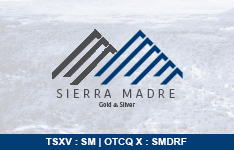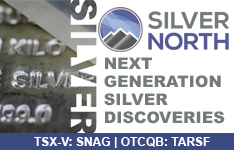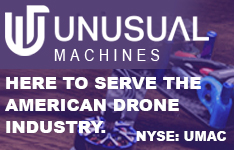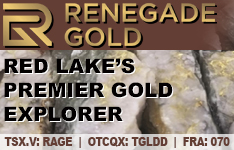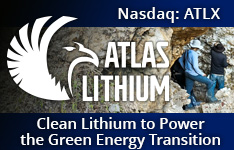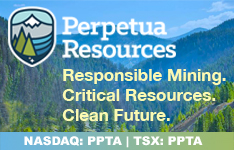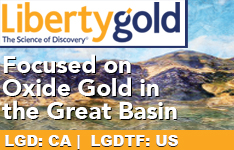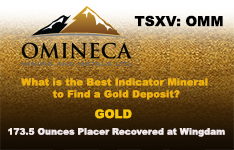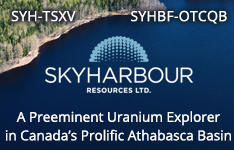Elemer Piros: The core philosophy of Steve Burrill, for the last 25 years, has been to embrace unrecognized technologies on the cutting edge in therapeutic areas such as regenerative medicine and personalized medicine. We have expanded on that by adding the research function. It's not just about the companies that are ignored; we also look at companies that have been loved in the past but have been forgotten. Perhaps there was a failure, or a series of failures in a company's history. But if we find a promising pipeline, we are willing to be open-minded.
TLSR: Are there special areas of focus?
EP: Our research encompasses these two categories: First, we look at early-stage companies where the scientific groundwork has been laid down and is solid, and second, we look at companies embracing human testing for the first time and demonstrating some indication of efficacy in treatment of a disease. Wherever we look the upside needs to be significant, because, as everyone knows, there is only a 10% chance that a drug will make it to the market once it enters a phase 1 trial. That means a 90% failure rate, unfortunately.
TLSR: Even small-cap funds can't buy micro caps in a lot of cases. Are any of the major institutional investors beginning to look at micro-cap companies as viable entities for some of their qualified investors? And what about venture capitalists (VCs) investing in micro-cap public companies?
EP: This happens on a selective basis, and usually involves specialist investors in biotech. Let me cite one very recent transaction—an investment in an oncology company called MethylGene Inc. (MGY:TSX). It just closed a $26 million ($26M) round, which essentially recapitalized the company. The financing was led by Baker Bros. Advisors LLC, OrbiMed Advisors LLC, Tang Capital Partners LP, Biotechnology Value Fund and Ouray Capital. These are specialist investors in biotechnology, and they are definitely investing, even at early stages: MethylGene has a couple of compounds in phase 1/2 development for oncology indications.
"It's not just about the companies that are ignored; we also look at companies that have been loved in the past but have been forgotten."
You asked whether VC firms or some of the larger funds would embrace a slice of investment in the early stages of public biotech companies. Actually, there is an interesting trend. They are not moving en masse, but there are signs of activity, with some VC firms hiring portfolio managers whose sole focus will be on publicly traded, early-stage biotechnology. They invest $5–20M per company with a VC-like three- to five-year time horizon.
TLSR: Back on April 5, 2012, President Obama signed the Jumpstart Our Business Startups (JOBS) Act into law. Your firm is attempting to leverage some of the benefits of this JOBS Act. What does it mean in practice? How will it affect a startup company? More to the point, how does Burrill help companies with these new rules of eased regulatory encumbrances, restrictions and costs on small businesses?
EP: Whether we are dealing with a startup or a restart, the reduced burden of regulations, such as Sarbanes-Oxley compliance requirements, for at least a five-year period, allows these companies to invest the money they save in research and development (R&D). That is a very nice trade-off. The legislation also allows companies to enter the public markets at an earlier stage, opening access to capital from a more diversified investor base, especially when money is less available. For listed companies, liquidity is a factor for investors who don't necessarily want to stay with an investment until a trade sale or initial public offering. How can Burrill help? We have extended our scope of services to already public or newly listed companies via the JOBS Act.
TLSR: What are you looking for today in emerging life sciences companies? What features get your attention and tip you to a bullish persuasion?
EP: A solid scientific foundation is a must, a given. Also, there has to be a clearly defined, unmet medical need. In the biotech world, there are very few examples of an Apple Inc. (AAPL:NASDAQ), where we really didn't know we needed an iPad or iPad mini until the company presented one. We don't often find examples where need was actually created by a biotech company.
I also like areas that are currently ignored. It could be because of historical setbacks, an example being Novelos Therapeutics Inc. (NVLT:OTCBB) in the field of radiopharmaceuticals. Titan Pharmaceuticals Inc. (TTNP:OTC) is another example, in that the field of drug addiction is not yet recognized as a meaningful market for drug development.
TLSR: You seem to have embraced the U.S. Food and Drug Administration's (FDA) 505(b)(2) regulatory pathway, which enables companies to leverage drugs that are already in the public domain.
EP: Yes. It certainly is an easier path to follow, and companies can leverage data that were collected in phase 1, 2 and 3 trials by a previous sponsor. A specific example of a company that has been able to do this is Titan Pharmaceuticals.
TLSR: Do you get the impression that investors don't take 505(b)(2) pathway development projects quite as seriously as you think they should? Do they overlook them because these drugs seem old to them?
EP: There could be that myth or misunderstanding. At times, the difference in formulation of a drug allows for such a minute advantage that it is difficult to handicap how it would translate into a competitive edge in the marketplace. However, sometimes a reformulated product can make a dramatic difference. For instance, the opioid-addiction pill Suboxone (buprenorphine + naloxone), originally sponsored by Reckitt Benckiser Pharmaceuticals Inc. (RBGPY:OTCPK), only works if patients take it every day. If a patient takes a drug holiday, he or she relapses back into addiction. But Titan's Probuphine (buprenorphine) is reformulated in a subdermal implant. Patients can forget about it for six months and still be protected. Even if patients choose to abuse heroin during treatment, the illegal substance will not have the same impact because the protective drug is in the patient's system at all times. Here, the difference in formulation is quite vast. The new formulation addresses a key problem in addiction, which is compliance.
TLSR: Who would be the buyers of Probuphine? Would it be clinics, state health departments, departments of correction?
EP: Interestingly, the clinician would need to learn a minor surgical procedure to administer the treatment. It takes about seven to 10 minutes to implant Probuphine, a matchstick-like rod made of a flexible plastic, and it takes about five minutes to take it out after six months. Not every clinician will be willing to learn this procedure, at least at first. However, about 25–30% of clinicians, according to some surveys, have indicated willingness to learn.
TLSR: You have a $4 target price on Titan, which represents an implied grand slam, a near quadruple from current levels. Is it possible that institutional buyers might negotiate the price down so far that the margins would be too thin?
EP: I think institutional buyers for the product would be in the minority, as opposed to clinicians who deal with these patients on an individual basis. Also, we haven't witnessed a large degree of price erosion with the original product, Suboxone. To many investors it appears to be a nonexistent market, but this drug actually brought in $1.2 billion ($1.2B) last year. It is far from nonexistent.
TLSR: When might we expect approval of Probuphine?
EP: Titan submitted a new drug application (NDA) at the end of October, and the FDA has 60 days to assign a Prescription Drug User Fee Act (PDUFA) date, which would be either six or 10 months from the date of submission. We should hear a decision on the drug sometime in mid-2013.
TLSR: We know this implantable technology is used in contraception. But are there other opportunities for unmet needs?
EP: Parkinson's disease is perhaps its second indication. Some encouraging animal data shows the technique is a reliable delivery mechanism for L-dopa (dihydroxyphenylalanine). Again, it's not only a convenience but also a compliance-enhancing solution. The potentials are essentially limitless. The only thing Titan needs is access to additional capital to move these programs into the clinic. The source of that capital could be a potential partnership for the commercialization of Probuphine. Just before the NDA was submitted, an unnamed partner made a down payment in the form of buying stock at a 25% premium—about $4M worth—just to extend an option to negotiate for commercialization rights of Probuphine until Dec. 31. We should hear about the fate of that partnership before year-end.
TLSR: If you could go ahead and mention another stock that you like, I'd love to hear it.
EP: One of them is very easy to understand. Ohr Pharmaceutical Inc. (OHRP:OTCBB) is developing a squalamine eye drop for wet age-related macular degeneration (AMD). The only solutions we have right now are intravitreal injections, meaning injections into the eye, every month to two months. Those drugs are Avastin (bevacizumab; Genentech/Roche Holding AG [RHHBY:OTCQX]) (used off-label), Lucentis (ranibizumab; Genentech/Roche AG) and a newcomer, Eylea (aflibercept). This market is $4B worldwide and the new entrant, Eylea, from Regeneron Pharmaceuticals Inc. (REGN:NASDAQ), is anticipated to do $800M in sales in 2012, which will be the first full year after launch. The advantage of Eylea versus Lucentis is that it requires slightly less-frequent injections. Obviously, patients just hate the injections, as well as the time they must spend in eye exams before the very painful treatments actually occur.
"Wherever we look, the upside needs to be significant, because as everyone knows there is only a 10% chance that a drug will make it to the market."
Ohr's squalamine is in phase 2 testing, and so, on paper, we don't yet have clinical proof of concept. But that is not entirely true. An intravenous (IV) formulation of the drug was developed by a predecessor company, Geneara Corp., and it went through phase 2 clinical testing in about 200 patients. It has shown very similar efficacy as observed with Avastin and Lucentis, but is slightly less robust. However, having a weekly IV infusion at a physician's office is much more onerous for patients than a once-every-two-months injection. The predecessor company had to give up because it was in a noncompetitive situation, and it wasn't able to raise money for a phase 3 trial.
What we know now, after preclinical animal studies with squalamine as an eye drop, is that the patient is getting about six times as much drug into the retina than the dose required to inhibit neovascularization (the formation of abnormal, leaky blood vessels). This allows us to speculate that the phase 2 trial in progress will be successful. The design is very interesting. A patient is started on Lucentis and then every day, twice a day, the eye drop is given.
TLSR: Sounds like an ideal maintenance therapy.
EP: Yes. And eventually, if evidence shows Lucentis injections do not need to be given because improvement with the drops is as remarkable as it is with Lucentis, patients could start with the eye drop. But that's farther down the road.
TLSR: Squalamine is a small molecule. Could it be synthesized?
EP: Yes, the synthesis has been worked out. It's not coming from a natural source, which was the shark liver.
TLSR: Another stock you could mention?
EP: Another interesting stock is Neptune Technologies & Bioressources (NTB:TSX; NEPT:NASDAQ) and its majority-owned pharmaceutical subsidiary, Acasti Pharma Inc. (APO:TSX). This omega-3 fatty acid manufacturer up in Canada suffered a very unfortunate occurrence in early November. Its manufacturing plant in Sherbrooke, Québec, actually exploded. Acetone (highly flammable) is used to purify the omega-3s from a natural source: krill, an Antarctic crustacean. The plant was a complete loss.
It is a tragedy because lives were lost. But the company was planning to double or triple capacity over the next two to three years, and a new plant is under construction right next to the one that exploded. The company is six to nine months away from completing the new plant, so it will likely take time off from manufacturing krill oil. In the meantime, Neptune is making an attempt to find third-party manufacturing partners to continue to supply distributors with krill oil, at least to some extent. Once the plant is completed, Neptune can get back to the same level of production, which was about 150,000 kilograms per year. Its krill oil is sold as a nutraceutical (Neptune Krill Oil, or NKO).
But what's more interesting to me is a purified version of Neptune's krill oil that is being developed as a drug for hypertriglyceridemia by Acasti, a majority-owned company of Neptune's. Early clinical data indicates that this drug could potentially be as good as, if not better than, two precedent omega-3s that are already approved by the FDA. One is Lovaza (omega-3-acid ethyl esters), sold by GlaxoSmithKline (GSK:NYSE). It sells about $1B/year. The other drug is Vascepa (icosapent ethyl), which received approval during the summer and was developed by Amarin Corp. (AMRN:NASDAQ). Each of these omega-3 products has a slightly differentiated profile.
All three products—Lovaza, Vascepa and the Acasti/Neptune drug CaPre (a purified extract from krill oil)—lower triglycerides. Lovaza, unfortunately, produces a slight elevation of the bad cholesterol, low-density lipoprotein (LDL). That is not ideal, yet it is still a $1B drug. Vascepa, on the other hand, not only lowers triglycerides but also doesn't increase LDL. A perfect trifecta would be a drug that could lower triglycerides, increase high-density lipoprotein (HDL/good cholesterol) and decrease LDL. Early data on CaPre indicates that this might be the case.
TLSR: So the preliminary thought is that CaPre would lower LDL, in addition to lowering triglycerides and increasing HDL.
EP: That was seen in early phase 2a trials. We have to wait for additional results to underscore the effect.
It is also interesting to note that people tend to equate all omega-3s to fish oil. There was an experiment comparing regular fish oil with Neptune Krill Oil. NKO, on all parameters, was far superior to ordinary fish oil (Bunea, R. et al., Alternative Medicine Review [2004] 9:420-428; described in detail on pages 19-20 of our initiation report on Neptune). Krill oil appears to have additional ingredients, including phospholipids and an antioxidant. These are all naturally occurring; Acasti doesn't add anything to the product. It simply purifies the good stuff from the krill, which appears to make it superior to ordinary fish oil. Lovaza and Vascepa are not derived from krill.
TLSR: Is your target price still $7, following the explosion?
EP: The initiation report contained the $7 target price. We lowered the target to $6 after the company did a financing, to factor in the dilution. On Nov. 12, we updated our research and went to a Neutral rating with no target price. We have a Market Perform (Neutral) rating right now on Neptune. On the manufacturing side of the business, I would like to see more specificity and tighter timelines. I would also like to see how much of the existing customer base the company would lose if it is not able to provide product for the next six to nine months.
TLSR: Neptune says it has business interruption, property and casualty, and civil liability insurance. But this explosion and fire occurred on the afternoon of Nov. 8. I did not see anything on the company's website for days following. It was not until Nov. 12 that there was a press release from the company. I think that's a long time not to say anything about a tragedy. Three people died, and 18 people had to be hospitalized. Even if all that human tragedy didn't occur, this is still the kind of thing that you need to report as a public company. What do you think?
EP: I would have wanted to hear more earlier, because we had to rely on the media for information. It was quite obvious from pictures following the incident that the plant was gone. We didn't know whether inventory was also stored at the site, and whether this would result in a complete halt of production or if there would be some material that Neptune could sell while it was working on completing the new plant. We didn't know the extent of the damage. There were a lot of questions.
"The reduced burden of regulations (initiated with the JOBS Act) allows companies to invest the money they save into research and development."
The company defended its communication policy, saying that first and foremost it wanted to deal with the human element—the people who perished, the 18 who were injured and their families. Between Nov. 8 and 12 the stock was halted. Since it started communicating on the 12th, and the stock finally resumed trading, Neptune has provided updates on its assessment of the damage.
I would add that, fortunately, these occurrences do not happen very frequently, and management teams just don't have the working experience to address everything on time and optimally. But I agreed with Neptune when it took care of the human element first.
TLSR: Can you mention another company?
EP: That would be Novelos Therapeutics, the radiopharmaceuticals company that I mentioned earlier. It is developing radioactive drugs, which is not a very popular sector because of a couple of commercial failures, Zevalin (ibritumomab tiuxetan; Spectrum Pharmaceuticals Inc. [SPPI:NASDAQ]) and Bexxar (tositumomab; GlaxoSmithKline). These two drugs were developed for a very narrow indication, non-Hodgkin's lymphoma (NHL).
TLSR: Zevalin and Bexxar are radioactive conjugated antibodies.
EP: Yes, and their biggest problem was Roche's Rituxan (rituximab), a non-radioactive drug that treats NHL really well. That's why the radioactive therapies never got off the ground.
As opposed to Zevalin and Bexxar, the Novelos drugs are not specific for a type of cancer. When examined in preclinical models, 52 out of 54 of those models demonstrated uptake of the company's radioactively labeled targeting vehicle, as opposed to healthy cells, which were largely immune to the uptake of this iodine-131 (I-131) labeled drug. It is also interesting that the company can swap out the I-131 isotope for a lesser or gentler energy-emitting isotope, the 124 version of iodine (I-124), using the same targeting vehicle. That could be a diagnostic agent. We are dealing with a personalized medicine concept here, whereby the patient would be imaged. If the drug is taken up by the lung tumor or the brain tumor, then the same patient could be treated with the same targeting vehicle, but with the much more powerful, I-131 version of the isotope attached to it. I like I-131 because it has been used on its own in thyroid cancer for the last 20–25 years, and it works. It gets into the thyroid cancer cells and actually destroys the cells from within.
There is a third leg to this story. If one swaps out the radioactive isotope for a fluorescent one, then this drug could be used as a surgical tool to differentiate between healthy and tumoral tissues. When a surgeon removes a glioblastoma from the brain, or a breast tumor, by shining light on the surgical site, he or she would be able to see where to cut with a safe margin in real time.
Novelos has developed one concept but three different approaches. Actually, all three could coexist in the same setting. I can envision a glioblastoma patient diagnosed with the light version of the company's drug. If a resection is warranted, then the tumor could be resected using the fluorescent version of the molecule. If the resection is not feasible because of the invasiveness of the tumor, then the hot version, the I-131-labeled version, could be applied to treat the patient.
TLSR: Where is it in development?
EP: The company is in phase 1/2 testing in the first two aspects, the imaging and the radiotherapy components. Like Ohr Pharmaceutical, Novelos already has some clinical proof-of-concept because we know that I-131 works in thyroid cancer. If the drug gets into a brain tumor or a pancreatic tumor, we know that I-131 would selectively destroy the tumoral tissue.
TLSR: I know you follow Omeros Corp. (OMER:NASDAQ). Would you speak to that?
EP: Omeros Corp. is a diversified biotechnology and a specialty pharma company under the same roof. The company has two phase 3 assets nearing FDA submission, along with a deep drug pipeline and a discovery engine that has been able to achieve unparalleled success. I would categorize the leading assets as specialty pharma products. They represent an improvement for patient management in the surgical setting. Patients are normally treated with anti-inflammatory drugs and/or painkillers right after surgery. However, inflammation occurs during surgery. Omeros has formulated existing drugs to be applied during surgery via the irrigation solution that is applied normally during procedures. The company has shown, in two phase 3 eye surgery trials, that the concept works: Patients recover faster. A phase 3 trial in the knee surgery setting is expected to be announced this month. I don't think we are dealing with blockbuster drugs here, but if approved, cash flows from these drugs could be reinvested in the company's burgeoning pipeline.
"A solid scientific foundation is a must, a given."
I would also like to mention what I believe is an unprecedented achievement in the field of drug discovery. It pertains to drugs that target G-protein-coupled receptors (GPCRs). GPCRs were favorite targets for drug discovery. About 30–40% of all marketed drugs target GPCRs; these include well-known brands such as Claritin, Imitrex, Zantac, Zyprexa, Vicodin and OxyContin. All together these and other drugs in the class address 46 GPCRs. Before Omeros entered the field, there were ~120 so-called orphan GPCRs. Scientists knew that they might be important in various diseases, but no drug leads were developed from them, including at big pharma.
Omeros has developed a universal "cracking" mechanism that yields drug leads for the orphan receptors. Here is the unprecedented part: Omeros has unlocked (or found drug candidates for) 46 of the orphan GPCRs in little over a year. The field was at a standstill for years, but now this relatively small company is ready to supply the pharma world with a treasure trove of drug candidates. The company has initiated business development activities to license most of these assets, with perhaps the exception of a few that they would develop on their own. These programs are preclinical—they are many years away from the market—but the sheer number and the unprecedented value (no one has been able to do it), makes me excited about the GPCR platform at Omeros.
Omeros has one last drug moving to clinical development early next year. People aren't usually excited about late preclinical assets, but this one is an exception. Before describing the asset, let me mention Alexion Pharmaceuticals Inc.'s (ALXN:NASDAQ) Soliris (eculizumab), a drug for two ultra-orphan indications. Both indications (paroxysmal nocturnal hemoglobinuria and atypical hemolytic uremic syndrome) are a result of the malfunction of the immune system's so-called complement arm. The immune system attacks blood components. Both indications are, fortunately, extremely rare. However, Alexion was able to create a market with Soliris, which this year would be worth $1.2B. How? The cost of Soliris is more than $400,000 per patient per year.
Enter Omeros. The company is developing an upstream inhibitor of the complement system—upstream in the biochemical cascade, where Soliris interferes. Based on animal experiments, there could be a number of advantages to the Omeros solution (OMS721), including a much lower dose given as an injection, as opposed to an infusion (Soliris). Furthermore, because of the point of the intervention in the complement cascade, it is thought that patients would not have to use anticoagulants, as they do with the Soliris treatment. The early clinical experiments with OMS721 could indicate whether the Omeros drug would be a serious contender against blockbuster Soliris. We will know within 6–12 months.
TLSR: I enjoyed this so much. Thank you, Elemer.
EP: Thank you. It was nice meeting you.
Elemer Piros joined Burrill & Co. from Rodman & Renshaw, where he served as a managing director and senior biotechnology analyst since 2002. He has ranked among the top analysts in various surveys, including ranking as the top biotechnology analyst by The Wall Street Journal in 2006 and by the Financial Times in 2010, based on stock portfolio performance. Prior to that, he served as a senior biotechnology analyst at Ladenburg Thalmann, and as a biotechnology research analyst with Spear, Leeds & Kellogg/Goldman Sachs. Before serving as an analyst, Piros spent eight years conducting research in biophysics, biochemistry and molecular biology at Cornell University and the University of California, Los Angeles. He holds a doctorate in neurosciences from UCLA, a bachelor's degree in biology from UCLA, and a bachelor's degree in mathematics and technology from Eotvos Lorand University in Budapest.
Want to read more Life Sciences Report interviews like this? Sign up for our free e-newsletter, and you'll learn when new articles have been published. To see a list of recent interviews with industry analysts and commentators, visit our Streetwise Interviews page.
DISCLOSURE:
1) George S. Mack of The Life Sciences Report conducted this interview. He personally and/or his family own shares of the following companies mentioned in this interview: None.
2) The following companies mentioned in the interview are sponsors of The Life Sciences Report: None. Streetwise Reports does not accept stock in exchange for services. Interviews are edited for clarity.
3) Elemer Piros: I personally and/or my family own shares of the following companies mentioned in this interview: None. I personally and/or my family am paid by the following companies mentioned in this interview: None. I was not paid by Streetwise Reports for participating in this story.






















